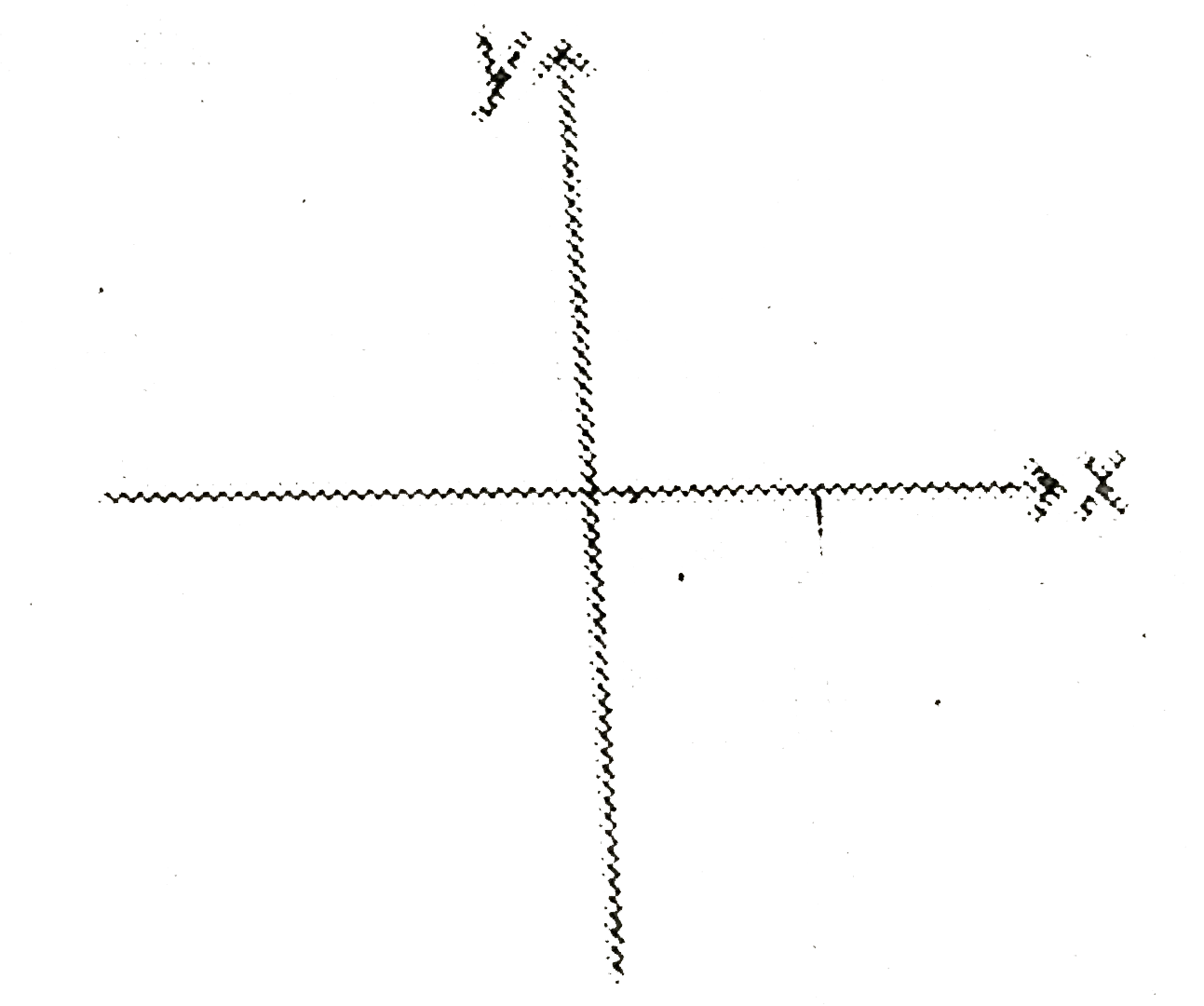If at , Find phase constant in , at , a particle executing SHM is going along negative x axis
To find the phase constant α in the equation x=Asin(ωt+α) given that x=A2 at t=0 and the particle is moving along the negative x-axis, we can follow these steps:
1. Substitute the given values into the equation:
At t=0, we have:
x=Asin(ω⋅0+α)=Asin(α)
Given that x=A2, we can set up the equation:
A2=Asin(α)
2. Simplify the equation:
Dividing both sides by A (assuming A≠0):
12=sin(α)
3. Find the possible values of α:
The equation sin(α)=12 has two solutions in the range (0,2π):
α=π6andα=5π6
4. Determine the correct value of α:
To find which value of α is correct, we need to consider the velocity of the particle. The velocity v is given by:
v=dxdt=Aωcos(ωt+α)
At t=0:
v=Aωcos(α)
Since the particle is moving in the negative x-direction, v must be negative.
5. Evaluate the velocity for both values of α:
- For α=π6:
v=Aωcos(π6)=Aω⋅√32>0
This indicates that the particle is moving in the positive x-direction, which is incorrect.
- For α=5π6:
v=Aωcos(5π6)=Aω⋅(−√32)<0
This indicates that the particle is moving in the negative x-direction, which is correct.
6. Conclusion:
Therefore, the correct phase constant α is:
α=5π6
At t=0, we have:
x=Asin(ω⋅0+α)=Asin(α)
Given that x=A2, we can set up the equation:
A2=Asin(α)
Dividing both sides by A (assuming A≠0):
12=sin(α)
The equation sin(α)=12 has two solutions in the range (0,2π):
α=π6andα=5π6
To find which value of α is correct, we need to consider the velocity of the particle. The velocity v is given by:
v=dxdt=Aωcos(ωt+α)
At t=0:
v=Aωcos(α)
Since the particle is moving in the negative x-direction, v must be negative.
- For α=π6:
v=Aωcos(π6)=Aω⋅√32>0
This indicates that the particle is moving in the positive x-direction, which is incorrect.
v=Aωcos(5π6)=Aω⋅(−√32)<0
This indicates that the particle is moving in the negative x-direction, which is correct.
Therefore, the correct phase constant α is:
α=5π6
Topper's Solved these Questions
- LINEAR AND ANGULAR SIMPLE HARMONIC MOTIONBook:CENGAGE PHYSICS ENGLISHChapter:LINEAR AND ANGULAR SIMPLE HARMONIC MOTIONExercise:Solved Example
Explore 15 Videos
- LINEAR AND ANGULAR SIMPLE HARMONIC MOTIONBook:CENGAGE PHYSICS ENGLISHChapter:LINEAR AND ANGULAR SIMPLE HARMONIC MOTIONExercise:Exercise 4.1
Explore 23 Videos
- KINETIC THEORY OF GASES AND FIRST LAW OF THERMODYNAMICSBook:CENGAGE PHYSICS ENGLISHChapter:KINETIC THEORY OF GASES AND FIRST LAW OF THERMODYNAMICSExercise:Interger
Explore 11 Videos
- MISCELLANEOUS KINEMATICSBook:CENGAGE PHYSICS ENGLISHChapter:MISCELLANEOUS KINEMATICSExercise:Interger type
Explore 3 Videos
Similar Questions
What is the time - period of x=Asin(ωt+α)?
View SolutionEvaluate
where A and omega are constants. ∫t_0Asinωdt
View SolutionThe displacement-time equation of a particle executing SHM is A−Asin(ωt+ϕ). At tme t=0 position of the particle is x=A2 and it is moving along negative x-direction. Then the angle ϕ can be
View SolutionA xandy co-ordinates of a particle are x=Asin(ωt)andy=Asin(ωt+π/2). Then, the motion of the particle is

View SolutionDisplacement of a particle executing SHM s x=10(cosπt+sinπt). Its maximum speed is
View SolutionThe linear displacement (y) of a particle varies with time as y=(asinωt+bcosωt). State whether the particle is executing SHM or not.
View SolutionTwo particles are in SHM along same line with same amplitude A and same time period T. At time t=0, particle 1 is at + A2 and moving towards positive x-axis. At the same time particle 2 is at −A2 and moving towards negative x-axis. Find the timewhen they will collide.
View Solutionx1=5sinωt
x2=5sin(ωt+53∘)
x3=−10cosωt
Find amplitude of resultant SHM.
View Solutionx1=5sinωt
x2=5sin(ωt+53∘)
x3=−10cosωt
Find amplitude of resultant SHM.
View SolutionA particle moves along the X-axis as x=u(t−2s)=at(t−2)2.
View Solution
